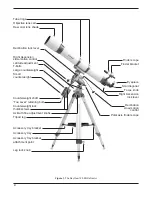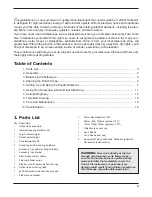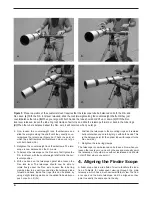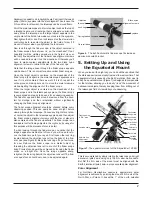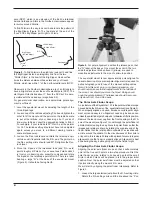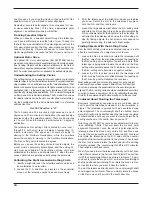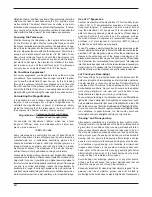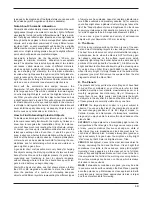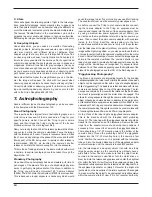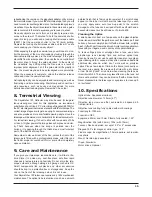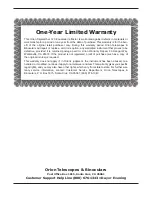
11
c.
d.
Figure 10. This illustration shows the telescope pointed in the four cardinal directions: (a) north, (b) south, (c) east, (d) west.
Note that the tripod and mount have not been moved; only the telescope tube has been moved on the R.A. and Dec. axes.
a.
b.
To point the telescope to the east or west, or in other directions,
you rotate the telescope on its R.A. and Dec. axes. Depending on
the altitude of the object you want to observe, the counterweight
shaft will be oriented somewhere between vertical and horizontal.
Figure 10 illustrates how the telescope will look when pointed
at the four cardinal directions—north, south, east and west.
The key things to remember when pointing the telescope are
that a) you only move it in R.A. and Dec., not in azimuth or lat-
itude (altitude), and b) the counterweight and shaft will not
always appear as it does in Figure 1. In fact it almost never will!
6. Using Your Telescope -
Astronomical Observing
Choosing an Observing Site
When selecting a location for observing, get as far away as
possible from direct artificial light such as streetlights, porch
lights, and automobile headlights. The glare from these lights
will greatly impair your dark-adapted night vision. Set up on a
grass or dirt surface, not asphalt, because asphalt radiates
more heat. Heat disturbs the surrounding air and degrades
the images seen through the telescope. Avoid viewing over
rooftops and chimneys, as they often have warm air currents
rising from them. Similarly, avoid observing from indoors
through an open (or closed) window, because the tempera-
ture difference between the indoor and outdoor air will cause
image blurring and distortion.
If at all possible, escape the light-polluted city sky and head
for darker country skies. You’ll be amazed at how many more
stars and deep-sky objects are visible in a dark sky!
Cooling the Telescope
All optical instruments need time to reach “thermal equilibri-
um.” The bigger the instrument and the larger the temperature
change, the more time is needed. Allow at least a half-hour for
your telescope to cool to the temperature outdoors. In very
cold climates (below freezing), it is essential to store the tele-
scope as cold as possible. If it has to adjust to more than a
40° temperature change, allow at least one hour.
Aiming the Telescope
To view an object in the main telescope, first loosen both the R.A.
and Dec. lock levers. Aim the telescope at the object you wish to
observe by “eyeballing” along the length of the telescope tube (or
use the setting circles to “dial in” the object’s coordinates).Then look
through the (aligned) finder scope and move the telescope tube
until the object is generally centered on the finder’s crosshairs.


